The Japanese Red Maple ‘Deshojo’ Bonsai is known for its distinct appearance that makes it a captivating choice for bonsai enthusiasts. The tree features delicate, palmate leaves with five pointed lobes, which add a graceful touch to its overall aesthetic. One of the most striking aspects of the ‘Deshojo’ Bonsai is its foliage, which undergoes a stunning transformation throughout the year.
Appearance of Japanese Red Maple Deshojo Bonsai
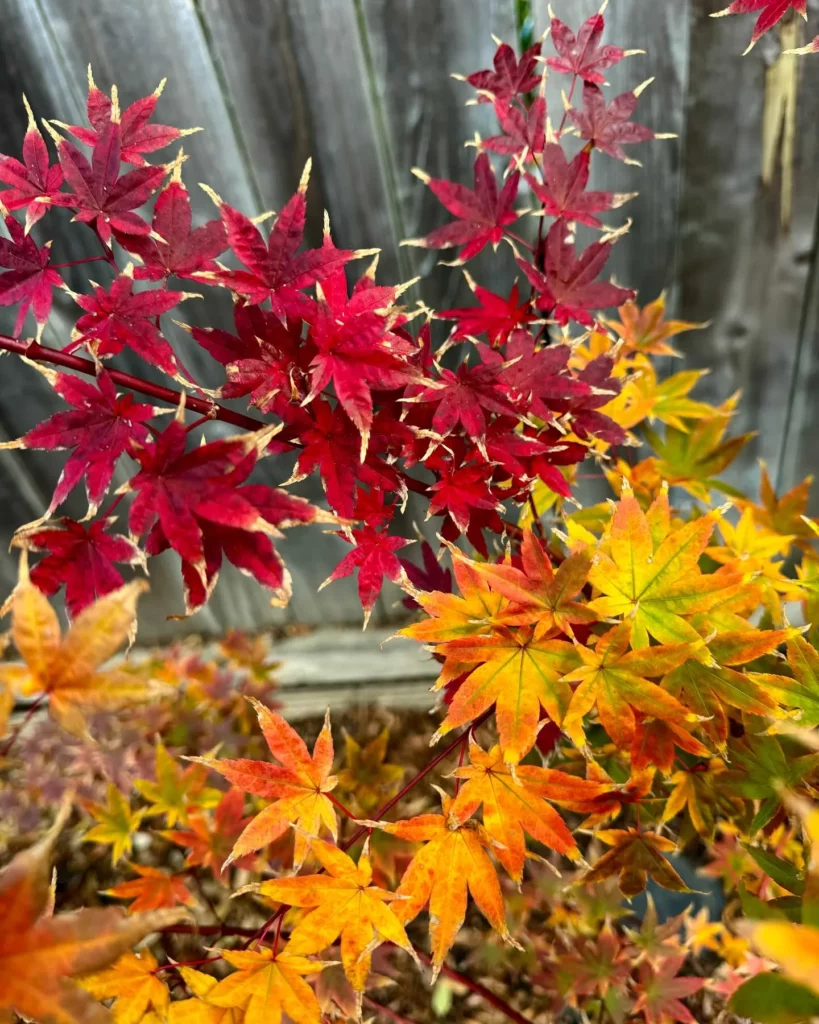
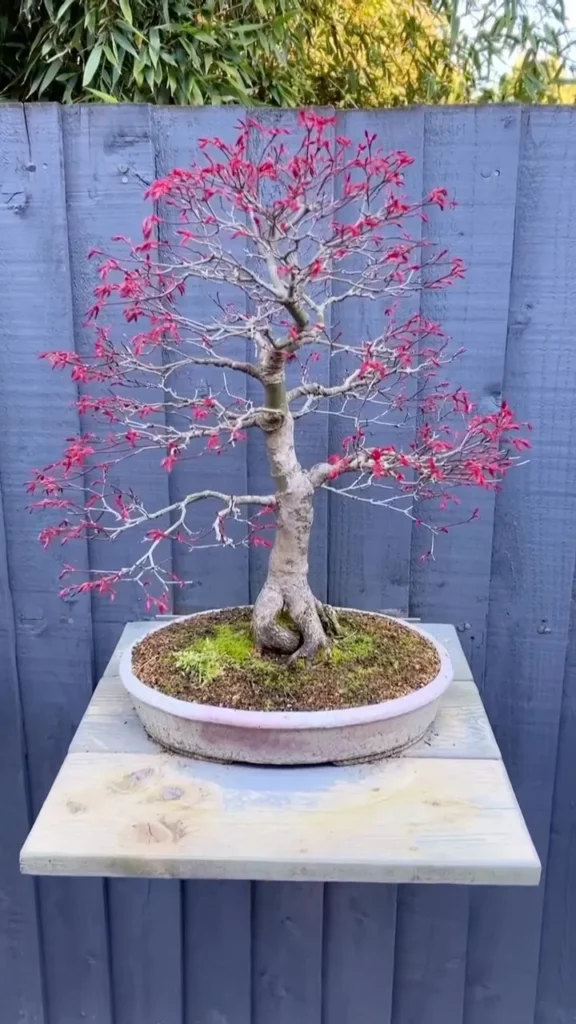
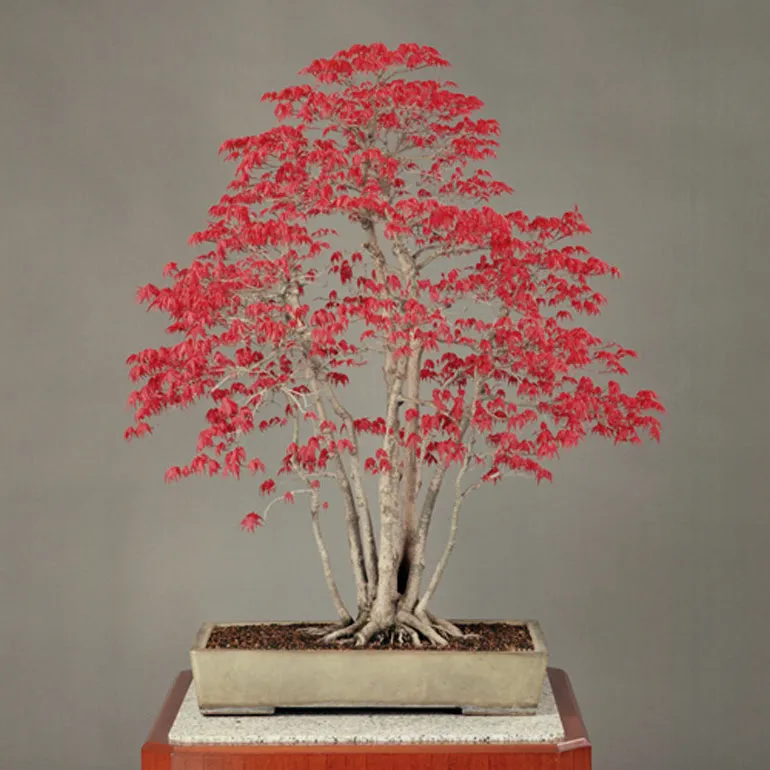
In the spring, the leaves emerge with a yellowish or orange hue, creating a vibrant display of color. As the seasons change, the foliage gradually transitions to a captivating shade of bright red that becomes the centerpiece of its appearance. The red color intensifies during the fall, providing a breathtaking spectacle of autumn hues. The rich color palette of the Japanese Red Maple ‘Deshojo’ Bonsai adds depth and character to any bonsai collection.
Aside from its foliage, the ‘Deshojo’ Bonsai also possesses a compact, bushy growth habit. While it can reach heights of up to 15 feet when grown in the ground, as a bonsai, it can be trained to stay much smaller, making it a suitable choice for indoor and outdoor cultivation. This characteristic growth pattern allows bonsai enthusiasts to shape and style the tree according to their preferences.
Light Requirements for Japanese Red Maple Deshojo Bonsai
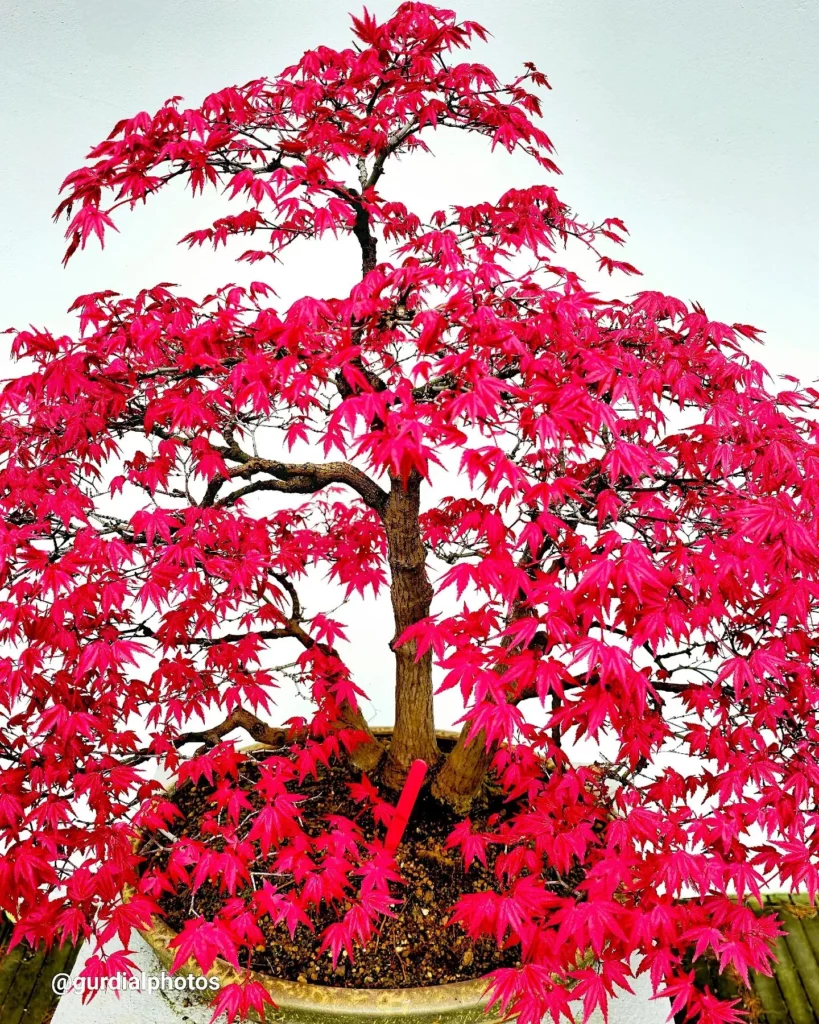
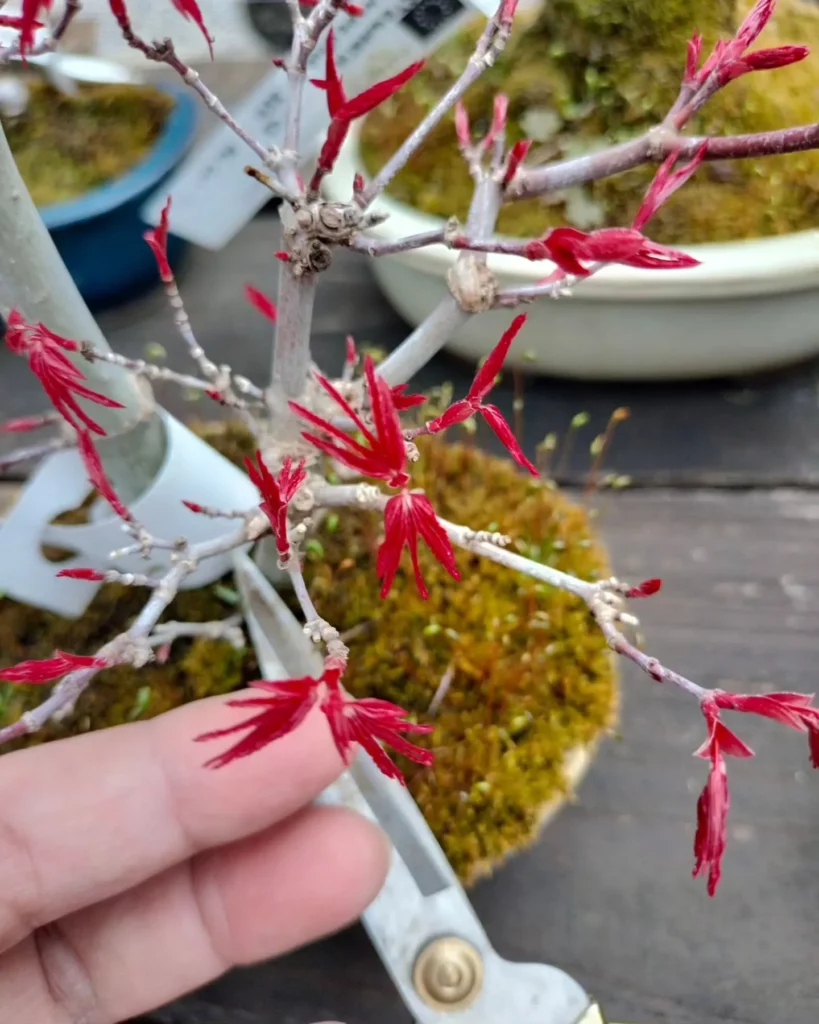
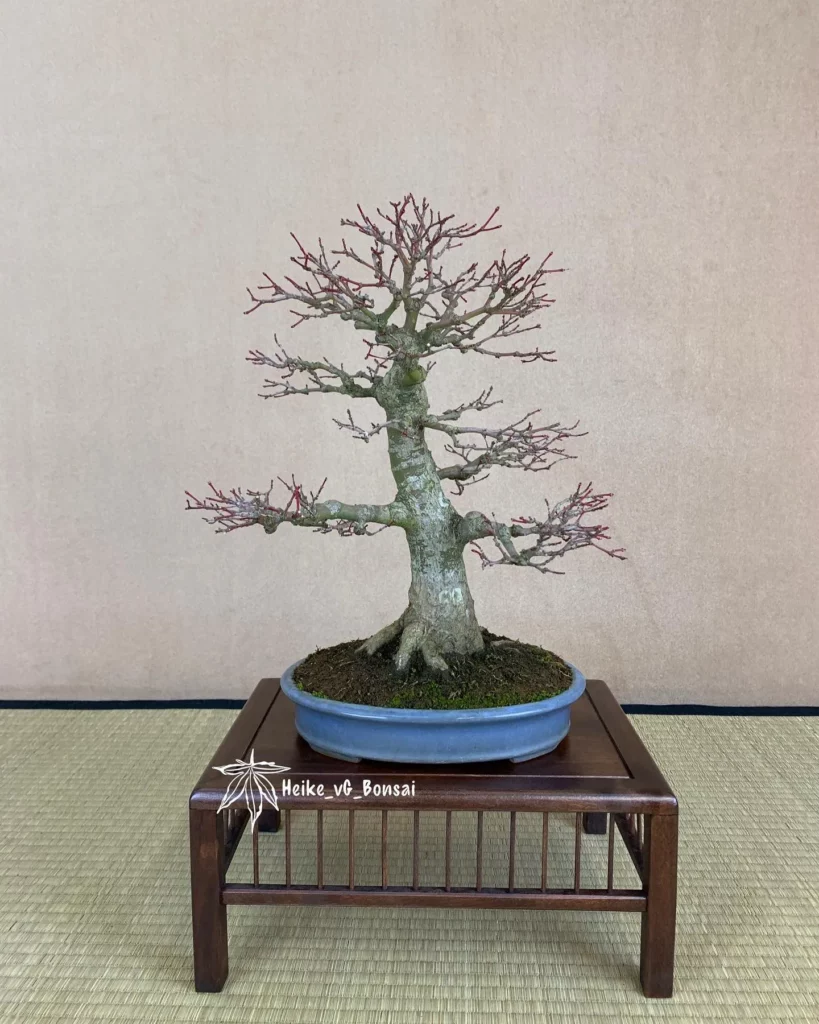
Creating the perfect environment for your Japanese Red Maple ‘Deshojo’ Bonsai is essential to its health and growth. When it comes to light requirements, finding the right balance between sun exposure and shade is crucial.
Japanese Red Maple ‘Deshojo’ Bonsai prefers sunny and airy locations, but it thrives best in indirect sunlight, especially when temperatures rise above 85°F (30°C). During hot summer afternoons, direct sunlight can potentially damage the delicate leaves of the bonsai, so it’s important to provide some shade or protection.
However, it’s important to note that the tree still needs a good amount of light to ensure healthy growth. Morning and evening sun are beneficial for the bonsai, as they provide the right amount of light without excessive heat. Dappled shade throughout the rest of the day offers a perfect balance for the Japanese Red Maple ‘Deshojo’ Bonsai.
Watering Japanese Red Maple Deshojo Bonsai
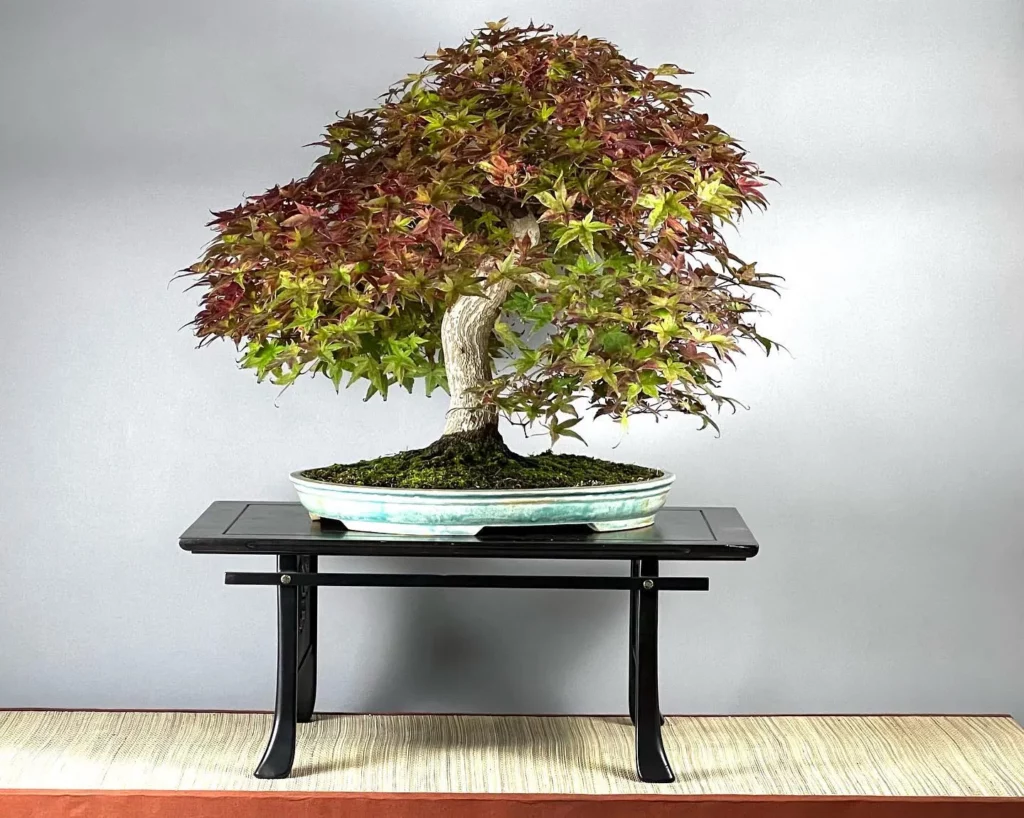
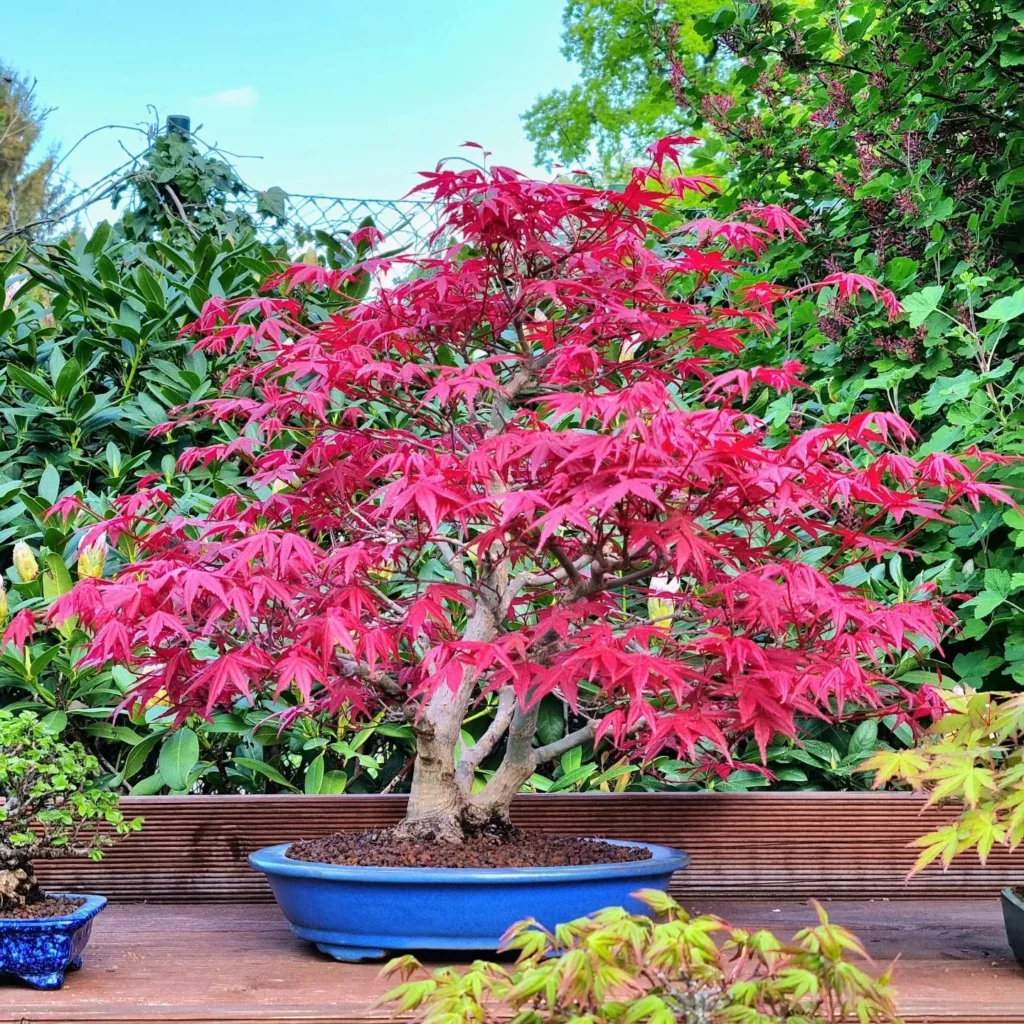
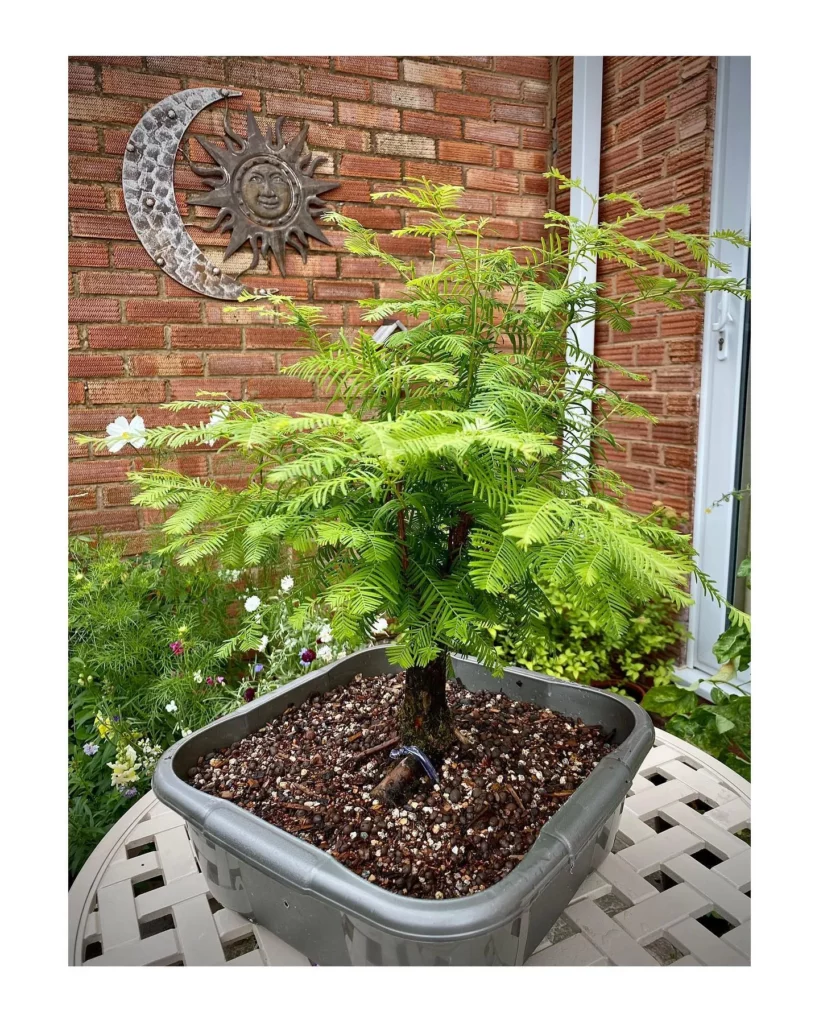
Proper watering is crucial for maintaining a healthy Japanese Red Maple ‘Deshojo’ Bonsai. The frequency and soil moisture levels play a vital role in the tree’s overall well-being. Here are some essential tips to ensure you water your bonsai effectively:
- Regular watering: Japanese Red Maple ‘Deshojo’ Bonsai needs regular watering to keep the soil evenly moist. During the growing season, it is best to water your bonsai daily, especially on hotter days.
- Observe soil moisture: Instead of following a fixed watering schedule, it is important to observe the soil moisture level. Check the soil by inserting your finger about an inch deep into the soil. If the soil feels slightly dry, it is time to water your bonsai.
- Avoid waterlogging: While it is essential to keep the soil evenly moist, it should not be waterlogged. Overwatering can lead to root rot and other health problems. Make sure the excess water can drain freely from the pot.
- Use well-drained soil: Japanese Red Maple ‘Deshojo’ Bonsai thrives in well-drained soil. A mixture of Akadama, Pumice, and lava rock is recommended to ensure proper drainage and aeration for the roots.
- Avoid calcareous water: Watering your bonsai with calcareous water, which has a high mineral content, can affect the pH-value of the soil. Japanese Red Maple ‘Deshojo’ Bonsai prefers a slightly acidic or neutral pH-value. If your tap water is calcareous, consider using filtered or collected rainwater for watering.
Fertilizing Japanese Red Maple Deshojo Bonsai
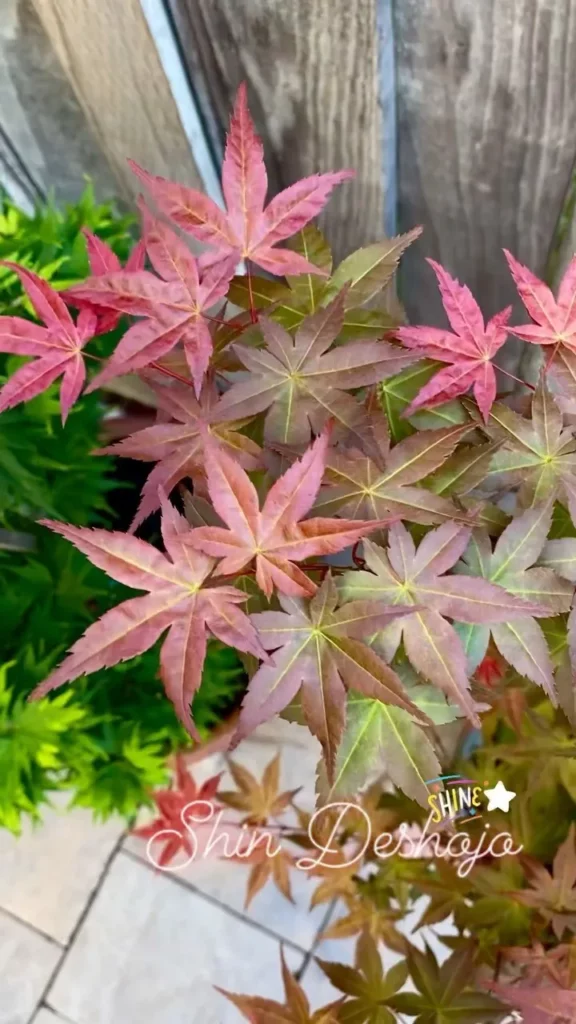
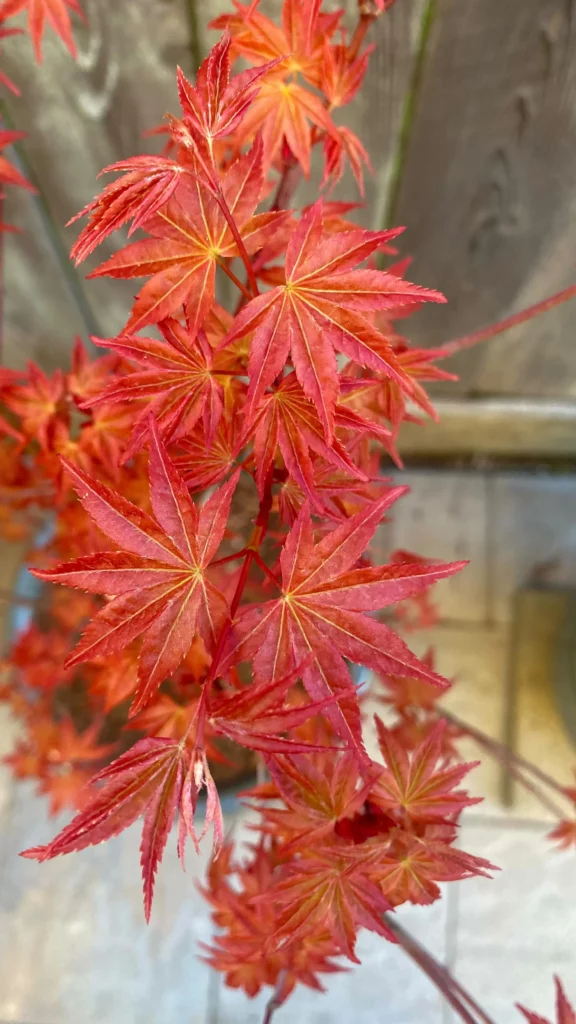
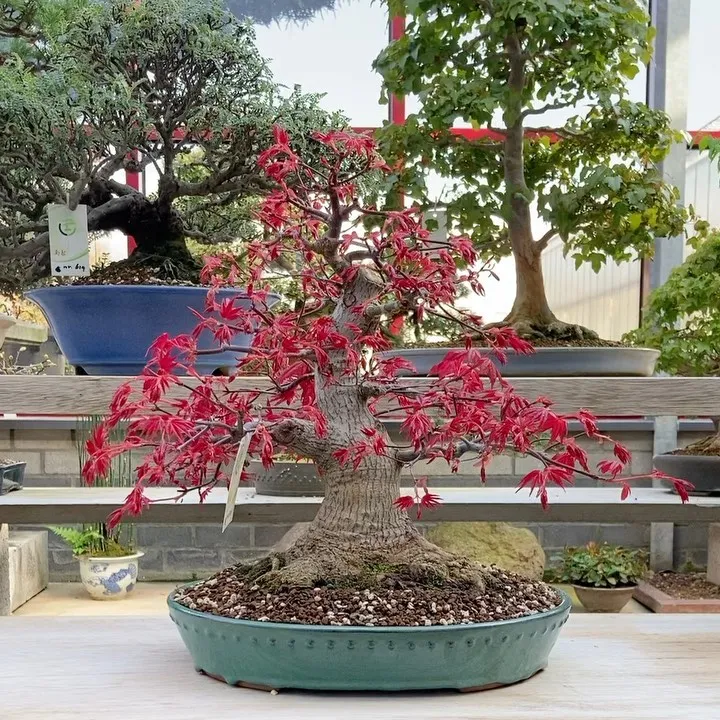
Japanese Red Maple ‘Deshojo’ Bonsai benefits greatly from regular fertilization. When it comes to fertilizers, organic options are highly recommended. Organic fertilizers provide essential micronutrients and have a slow and gentle effect on the tree’s growth and development.
For more mature bonsai trees, solid organic fertilizers are preferred. These can be applied during the growing season, following the instructions provided on the packaging. It is important to apply the fertilizer evenly around the bonsai, avoiding direct contact with the trunk and branches. After application, gently water the bonsai to ensure proper absorption of the nutrients.
Young plants or raw material can benefit from a liquid fertilizer supplement once a week. This helps promote stronger growth and establishment of the bonsai. Again, it is crucial to carefully follow the instructions on the fertilizer package to determine the proper dosage.
When choosing fertilizers, it is important to be mindful of the nitrogen concentration. High levels of nitrogen can lead to the development of oversized leaves and internodes, which can affect the overall aesthetic appeal of the bonsai. Be sure to select fertilizers with a balanced nutrient ratio and avoid those with a high nitrogen concentration.
Potting Japanese Red Maple Deshojo Bonsai
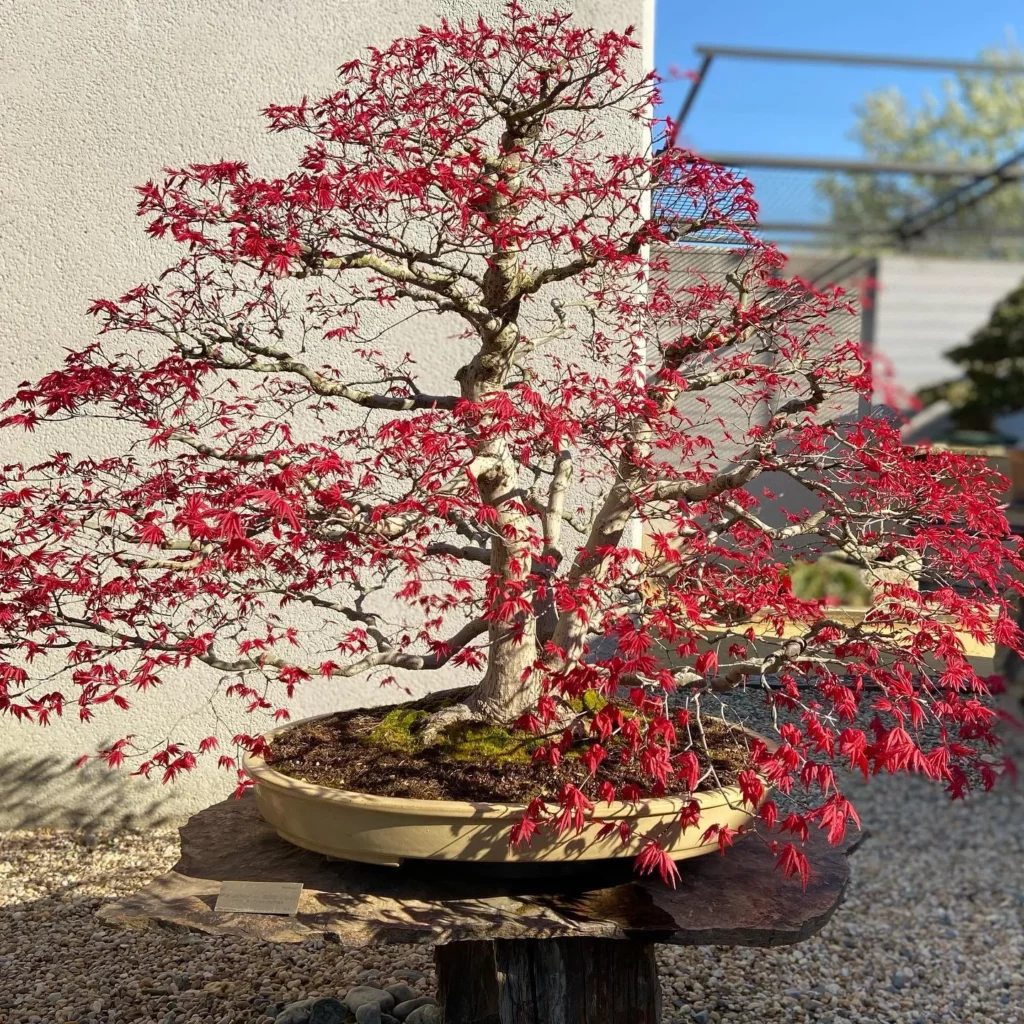
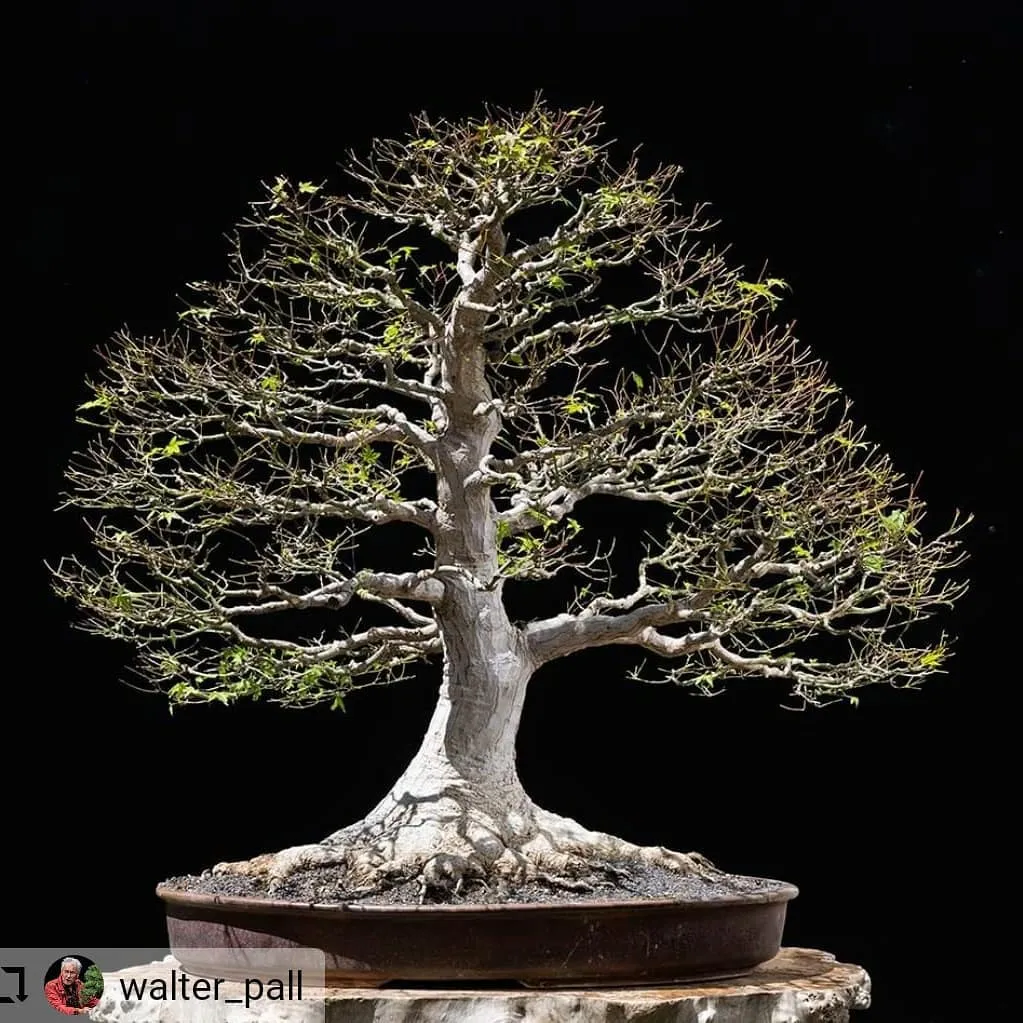

Proper potting is essential for the health and growth of your Japanese Red Maple Deshojo Bonsai. Regular repotting every two years prevents the roots from becoming rootbound and allows the tree to thrive. Here are some key steps to follow:
- Choose the right time: Repotting should be done in the spring, just before the buds start to open. This ensures that the tree has ample time to recover and establish itself before the summer heat.
- Prepare a well-drained soil mixture: Use a combination of Akadama, Pumice, and lava rock to create a well-drained soil mixture. This will ensure proper drainage and aeration for the roots, preventing waterlogged soil and root rot.
- Efficiently prune the roots: During repotting, carefully prune the roots by removing up to one-third of the root mass. This helps maintain a healthy root system and stimulates new root growth. Use clean, sharp tools to avoid damaging the roots.
- Choose the right pot: Select a bonsai pot that provides adequate space for the roots to grow and has good drainage holes. The pot should be slightly larger than the existing one to accommodate the new root growth.
- Repot with care: Gently remove the bonsai from its current pot, being careful not to damage the roots. Place the tree in the new pot, ensuring that the roots are spread out evenly. Fill the pot with the well-drained soil mixture, making sure to gently press it down to eliminate air pockets.
Propagation of Japanese Red Maple Deshojo Bonsai
Japanese Red Maple ‘Deshojo’ Bonsai can be propagated through various methods, including planting seeds, taking cuttings, or using air layering techniques.
Planting seeds is a straightforward method that involves collecting mature seeds from the parent tree and planting them in a well-draining soil mixture. However, it’s important to note that it can take several years for the seedlings to reach a stage suitable for bonsai training.
Another method is taking cuttings from existing trees. This involves selecting a healthy branch, cutting it at a specific angle, and treating it with rooting hormone before planting it in a container with the appropriate soil mixture. It’s important to keep in mind that while cuttings can develop into new trees, they may not retain the exact characteristics of the desired bonsai tree.
Air layering is another option for propagating Japanese Red Maple ‘Deshojo’ Bonsai. This technique involves selecting a branch of the tree and creating a wound by removing a section of the bark. The exposed area is then treated with rooting hormone and wrapped with moist sphagnum moss. Over time, roots will develop at the wound site, and once they are well-established, the branch can be cut and potted as a new bonsai tree.
Growth and Development of Japanese Red Maple Deshojo Bonsai
Japanese Red Maple ‘Deshojo’ Bonsai exhibits a moderate growth rate and can be easily trained to achieve desired shapes and structures through strategic pruning and wiring techniques. Pruning plays a crucial role in shaping the tree and promoting branching, and it should be performed year-round to maintain its desired form.
When pruning Japanese Red Maple ‘Deshojo’ Bonsai, it is recommended to prune stronger branches during the autumn or summer seasons to avoid bleeding. On the other hand, new growth should be pruned back to one or two pairs of leaves, as this stimulates a more compact growth pattern and encourages ramification.
One effective technique to achieve delicate ramification in the branches of the bonsai is to pinch and remove the soft tip of the shoot between two leaves. This practice helps the tree develop a more intricate and refined structure over time. Additionally, selective leaf pruning can be utilized to promote a second flush of growth, adding depth and density to the foliage.
Pests and Diseases of Japanese Red Maple Deshojo Bonsai
While the Japanese Red Maple ‘Deshojo’ Bonsai is generally a sturdy tree, it can still be susceptible to pests and diseases that can affect its health and appearance. Two common pests that bonsai enthusiasts may encounter are aphids and scale insects. Aphids are small insects that feed on the sap of the bonsai, causing stunted growth and deformed leaves. These pests can be controlled by using standard insecticide sprays specifically designed to target aphids.
Scale insects are another pest that can infest Japanese Red Maple ‘Deshojo’ Bonsai. These tiny, immobile insects attach themselves to the branches and leaves of the tree, feeding on its sap. If left untreated, scale insects can weaken the bonsai and make it susceptible to other diseases. To combat scale insects, it’s important to regularly inspect your bonsai and remove any signs of infestation. This can be done by gently scrubbing the affected parts of the tree with a soft brush and using horticultural oil or insecticidal soap.
Verticillium wilt is a fungal disease that can pose a serious threat to Japanese Red Maple ‘Deshojo’ Bonsai. This disease can cause wilting, yellowing, and eventually the death of the tree. Unfortunately, there is no cure for verticillium wilt, and infected trees should be removed to prevent the spread of the disease to other plants. To minimize the risk of infection, it’s important to practice good bonsai hygiene by regularly cleaning and disinfecting your tools, especially when working with diseased or infected plants.
To ensure the health and vitality of your Japanese Red Maple ‘Deshojo’ Bonsai, it’s crucial to regularly inspect your tree for signs of pests or diseases. Early detection and prompt action can prevent the spread of infestations and minimize the risks associated with diseases such as aphids, scale insects, and verticillium wilt. By maintaining proper care, sanitation, and vigilance, you can help your bonsai thrive and enjoy its beauty for years to come.
FAQ
What are the key characteristics of a Japanese Red Maple ‘Deshojo’ Bonsai?
The Japanese Red Maple ‘Deshojo’ Bonsai is known for its vibrant red foliage and compact, bushy growth habit. It has delicate, palmate leaves with five pointed lobes.
What are the light requirements for a Japanese Red Maple ‘Deshojo’ Bonsai?
The Japanese Red Maple ‘Deshojo’ Bonsai thrives in sunny and airy locations, but it prefers indirect sunlight. It is important to provide morning and evening sun with dappled shade throughout the rest of the day.
How often should I water a Japanese Red Maple ‘Deshojo’ Bonsai?
It is recommended to water the bonsai daily, especially during the growing season. However, the soil should never dry out completely or become waterlogged. It is important to observe the soil moisture and water accordingly.
What type of fertilizer should I use for a Japanese Red Maple ‘Deshojo’ Bonsai?
Organic fertilizers are recommended, as they provide essential micronutrients and have a slow and gentle effect on the tree. Mature bonsai prefer solid organic fertilizers, while young plants can benefit from liquid fertilizer once a week.
How often should I repot a Japanese Red Maple ‘Deshojo’ Bonsai?
Japanese Red Maple ‘Deshojo’ Bonsai should be repotted every two years to prevent the roots from becoming rootbound. Repotting should be done in the spring before the buds start to open.
How can I propagate a Japanese Red Maple ‘Deshojo’ Bonsai?
Japanese Red Maple ‘Deshojo’ Bonsai can be propagated through planting seeds, taking cuttings, or using air layering techniques. Each method has its own advantages and considerations.
How can I shape and maintain the growth of a Japanese Red Maple ‘Deshojo’ Bonsai?
Pruning and wiring are the key methods for shaping the tree. Pruning should be done year-round to shape the tree and encourage branching. Delicate ramification can be achieved through pinching and leaf pruning.
What pests and diseases should I be aware of when caring for a Japanese Red Maple ‘Deshojo’ Bonsai?
Common pests include aphids and scale insects, which can be controlled with standard insecticide sprays. Verticillium wilt is a fungal disease that can be detrimental to the bonsai. Regular inspection and proper care can help prevent and manage pests and diseases.




